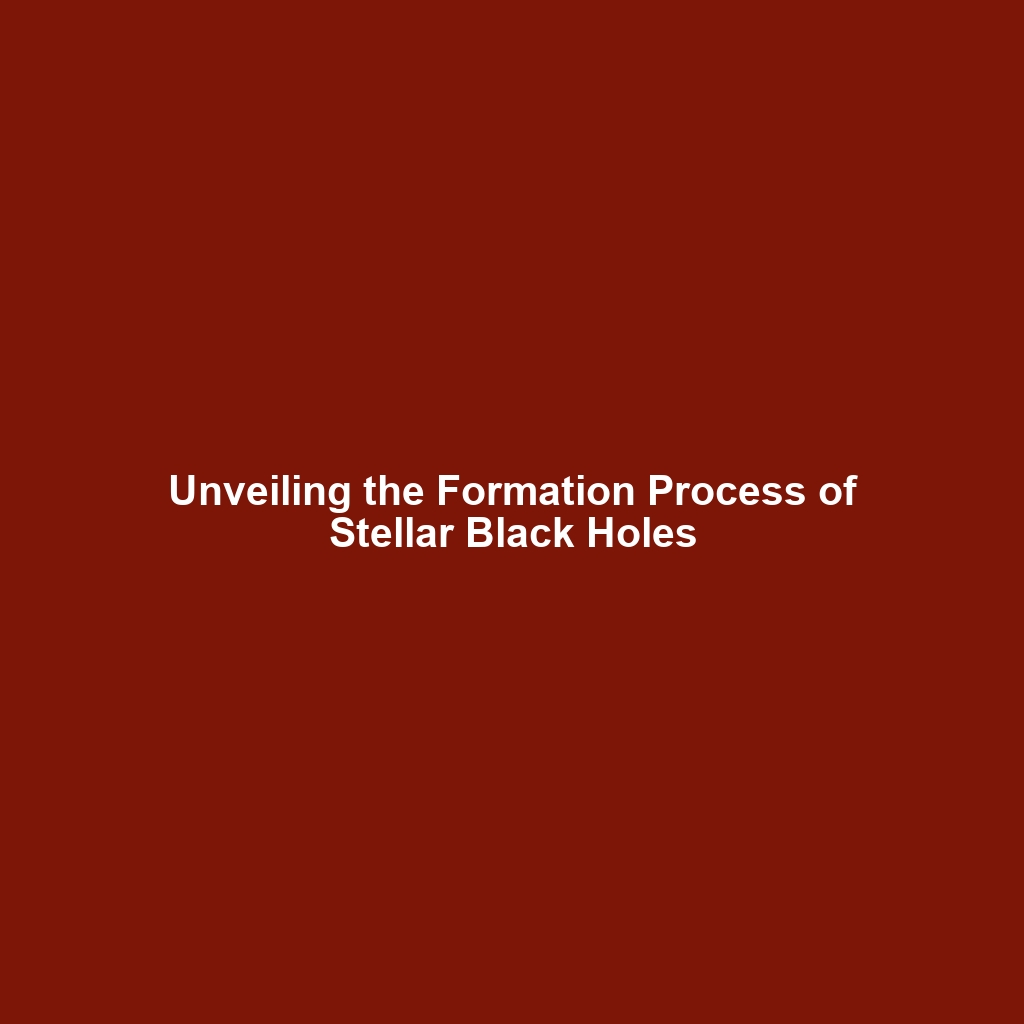Formation Process of Stellar Black Holes
Introduction
The formation process of stellar black holes is a profound area of study within astrophysics, significantly contributing to our understanding of black holes as a whole. These enigmatic objects, characterized by their immense gravitational pull, form from the gravitational collapse of massive stars at the end of their life cycle. Understanding this process sheds light on stellar evolution, the lifecycle of matter, and the dynamics of galaxies. This article delves into the key concepts surrounding the formation process of stellar black holes and explores their relevance in the broader context of black holes.
Key Concepts
The Stellar Lifecycle
The journey toward becoming a stellar black hole begins with a star that has a mass at least three times greater than that of our sun. These massive stars undergo a process of nuclear fusion, which generates energy and counteracts gravitational collapse. Eventually, when the star exhausts its nuclear fuel, the core collapses leading to a supernova explosion, and if the core’s mass is sufficient, it transforms into a stellar black hole.
Types of Black Holes
Stellar black holes are one of several types of black holes, primarily differing in their formation processes. Other types include supermassive black holes, which reside at the centers of galaxies, and intermediate black holes, which are less understood. Studying stellar black holes allows astronomers to comprehend the transition from light to the gravitational phenomena that define black holes.
Applications and Real-World Uses
Research into the formation process of stellar black holes has important implications across several fields:
- Astronomical Research: Understanding black hole formation aids in the study of galaxy formation and evolution.
- Gravitational Wave Astronomy: Stellar black hole mergers produce gravitational waves, which help validate theories of gravitational physics.
- Cosmology: Insights from stellar black holes contribute to understanding the fundamental laws governing the universe.
Current Challenges
Several challenges persist in studying the formation process of stellar black holes:
- Difficulty in direct observation due to black holes’ nature.
- Limited understanding of the conditions that lead to different types of black holes.
- Challenges in modeling and simulating stellar core collapse accurately.
Future Research and Innovations
Future research is expected to uncover new insights into the formation of stellar black holes. Potential innovations include:
- Advanced telescopes capable of observing the early signals of black hole formation.
- Improved simulations using AI and machine learning to better understand collapse mechanisms.
- Interdisciplinary approaches integrating quantum physics with astrophysics to explore unknown phenomena.
Conclusion
In summary, the formation process of stellar black holes is integral to our understanding of black holes and the universe’s evolution. As research progresses, the knowledge gained will pave the way for exciting discoveries about the nature and behavior of these mysterious entities. To learn more about related topics, consider exploring articles on supermassive black holes and gravitational waves.

Leave a Reply